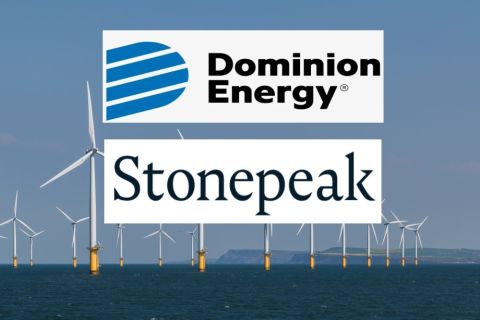Presented by:

This article appears in the E&P newsletter. Subscribe to the E&P newsletter here.
In the U.K., there are 39 wind farm developments dotted along the island’s coastline. This is set to increase rapidly heading toward the government’s 2030 target of ensuring every home in the country is powered by electricity generated from this green energy resource.
For starters, about four times as many wind turbines will be required to feed electricity into the grid. Maintaining these monopiles and associated substations—often located in remote and tricky to reach offshore arrays—is a complex business. More service operation vessels (SOVs), which provide living space as well as stable conditions for the safe transfer of personnel and equipment via a motion compensated walk-to-work gangway or by a daughter craft vessel, will be needed. But there is an understandable emphasis on building and chartering greener ships that are future-proofed to deliver zero emissions.
New SOV fleet
In 2021 North Star, which has the largest U.K.-wholly owned marine fleet, made a big splash entering the offshore wind vessel market after securing four long-term SOV charters, each of which required a newbuild vessel, allowing North Star to bring advanced, low-emissions tonnage to the market. This has quickly established North Star as the U.K.’s largest service vessel provider. The company is also the first to bring hybrid-powered daughter craft to the global offshore wind market, while setting a new standard for safe operations with an increased sea state operability at wave heights of up to 1.7 m.
Workforce priority
For anyone that’s worked offshore will tell you, a well-rested, healthy and well-fed workforce makes all the difference. North Star has made it the company's mission to ensure its SOV renewables fleet has superior hotel standard accommodation, gyms and healthy menus, to ensure client comfort.
Pivotal to this is the technology that counters the ship’s undulating rolling motions. North Star placed vessel stability as paramount in its SOV design, giving the fleet the edge on safety, comfort, workability, reliability and sustainability.
Tech features
North Star has partnered with some of the most innovative technology companies. For optimal efficiency, the SOV power package is hybrid. With enough battery capacity onboard to allow for spinning reserve and peak shaving, they will run with less redundancy in operation. This means instead of two engines deployed on dynamic positioning, just one will run, resulting in significant saving-to-fuel-burn.
The battery size capability is ready to be upgraded once the challenge of in-field charging is resolved, providing the SOV with a very predictable operational profile. The entire hotel load in port will be serviced by a shoreside power source also charging the batteries, allowing for a short period of operation without using diesel gensets.
Over time, North Star will increase the battery capacity from under 1 MWh to potentially up to 18-25 MWhs, allowing for longer operation periods of time in-field using just the batteries.
The company is also working closely to monitor other zero-emission fuel sources, including hydrogen (LOHC) and methanol. The future technology spaces on North Star's ships ensure they are future-proofed to allow for retrofit to utilize these fuels once sufficient fueling infrastructure is put in place to enable that transition.
The company also improved the vessel’s onboard logistical life-cycle efficiency by adopting a side-loading concept similar to aeroplane designs, offering a reduced safety incident risk. The main deck layout has been designed in conjunction with experienced offshore wind operators and turbine manufacturers to maximize available space, and the company has improved traceability by adopting new scanning and tracking technology to provide accurate reporting throughout the loading and offloading process.
As the offshore wind market expands in the U.K. and beyond, its green renewables fleet solutions such as these will be best placed to support the workforce, the environment and reduce investment risk.
About the author: Matthew Gordon is CEO of North Star Group.
Recommended Reading
Marketed: Amati Royalties Powder River Basin Opportunity
2024-03-01 - Amati Royalties has retained EnergyNet for the sale of a Powder River Basin opportunity with four wells and two pending wells in Campbell County, Wyoming.
Marketed: Stone Hill Minerals Holdings 95 Well Package in Colorado
2024-02-28 - Stone Hill Minerals Holdings has retained EnergyNet for the sale of a D-J Basin 95 well package in Weld County, Colorado.
Marketed: EnCore Permian Holdings 17 Asset Packages
2024-03-05 - EnCore Permian Holdings LP has retained EnergyNet for the sale of 17 asset packages available on EnergyNet's platform.
Marketed: Wasatch Energy Management Non-operated WI in Utah
2024-02-14 - Wasatch Energy Management has retained EnergyNet for the sale of non-operated working interest and royalty opportunities in Duchesne and Uintah counties, Utah.
Stonepeak, Dominion Energy to Partner on Virginia Offshore Wind Project
2024-02-22 - Stonepeak will acquire a 50% interest in Dominion Energy’s offshore wind project, which is expected to be the largest offshore wind farm in the U.S.

